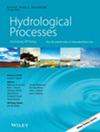Grazing Exclusion Modulates Preferential Flow Dynamics Through Root–Soil Architectural Reorganisation in Arid Shrublandsz
Abstract
Preferential flow (PF) critically regulates the water redistribution and ecological functions in arid ecosystems. This study investigated how grazed exclusion alters the root–soil architecture within PF zones and compared the structural differences between preferential and matrix flow (MF) zones. Focusing on Caragana korshinskii shrublands in Yanchi County, China, we employed CT scanning and 3D reconstruction to quantify the geometric patterns and topological characteristics of soil aggregates, macropores and root systems under contrasting management conditions (enclosed vs. grazed). Key findings revealed the following: (1) Enclosed natural grasslands exhibited maximum dye-stained areas (40.38%) and infiltration depths (271 mm); (2) Both grazed artificial and enclosed natural shrublands showed homogenised distributions of aggregates and macropores; (3) Enclosed practices significantly reduced aggregate number (47.2%–65.5%), macropore number (27.0%–30.9%) and root number (39.0%–64.5%) while promoting root thickening (10.7%–43.6% diameter increase, p < 0.05); (4) PF zones contained more aggregates (29.3%–219.1%) and macropore(35.3%–89.9%) than matrix zones (p < 0.05). The results show that moderate grazing can produce more aggregates and macropores, forming a root–soil structure that is more conducive to the PF process. These findings augment our understanding of rhizosphere interactions and sustainable land management practices.

 求助内容:
求助内容: 应助结果提醒方式:
应助结果提醒方式:


